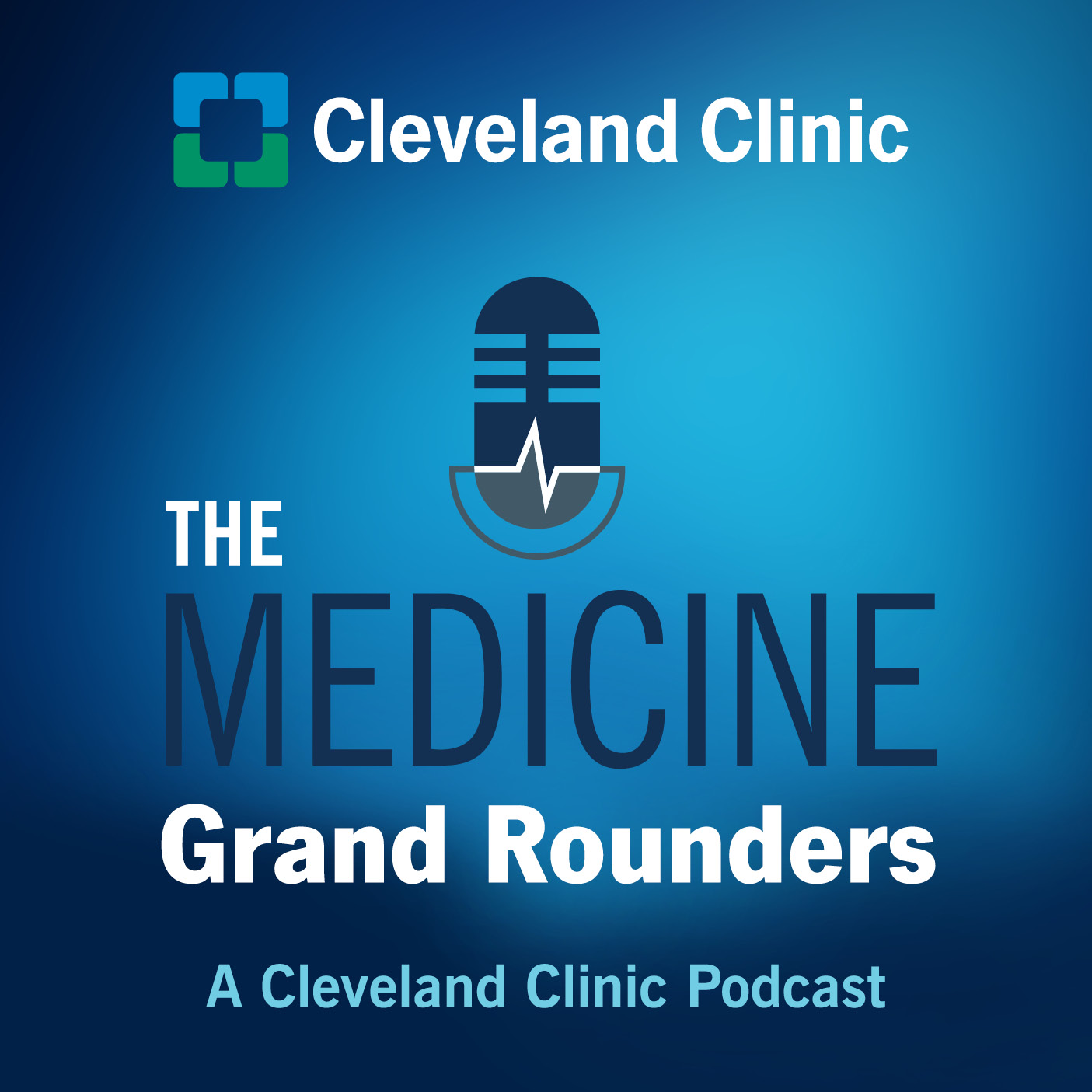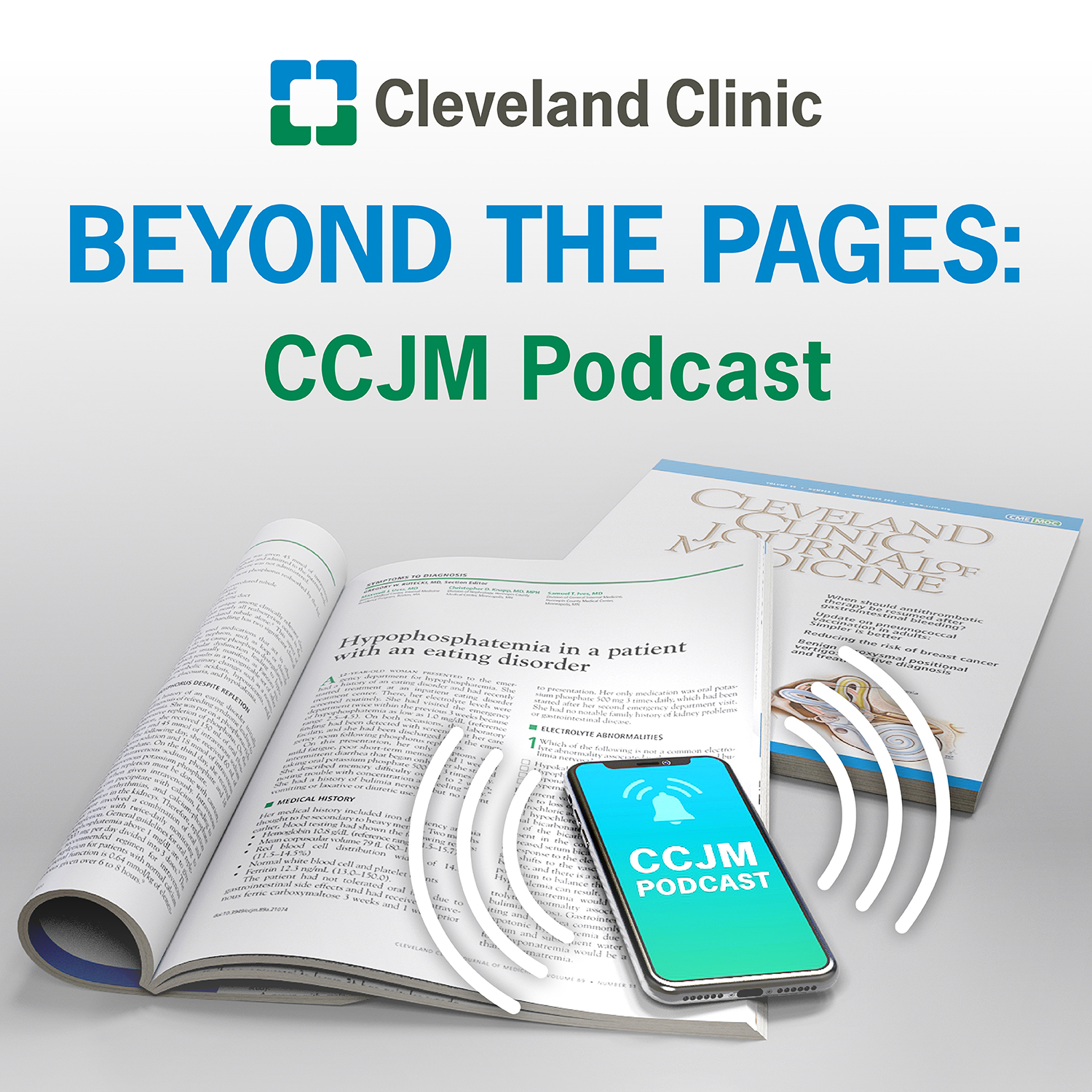Osteoporosis with Dr. Leila Khan

Dr. Leila Khan discusses her approach to the diagnosis and management of osteoporosis. Moderated by Dania Salih Bacha, MD.
Subscribe: Apple Podcasts | Podcast Addict | Buzzsprout | Spotify
Osteoporosis with Dr. Leila Khan
Podcast Transcript
Question 1: (Dr. Wardrop): I can ask the first question to Dr. Khan. So for the internal medicine residents, medical students, and PCPs, what is osteoporosis and how is it diagnosed?
Answer: (Dr. Khan):
- Definition: Osteoporosis is a systemic skeletal disease characterized by low bone mass, micro-architectural disruption, and skeletal fragility, which results in decreased bone strength and increased risk of fracture. Osteoporosis is one of the greatest threats to the health of older adults, as fractures of the spine or hip can lead to substantial morbidity, mortality, and huge healthcare costs. After a hip fracture, many women never regain independence, 20% are institutionalized, and the risk of death within 1 year doubles!
- Prevalence: Osteoporosis used to be thought of as an inevitable part of aging because it’s very common among the elderly. Actually, a fracture due to osteoporosis occurs every 3 seconds around the world! The problem with osteoporosis is that it’s a silent disease until it causes a fracture, which is why early detection and diagnosis are crucial.
- Diagnosis: Osteoporosis can either be diagnosed when a patient has a fragility fracture, which is basically a fracture that occurs spontaneously or from minor trauma, such as a fall from a standing height. For example, one should be aware that a fall on black ice is actually a fragility fracture or an osteoporotic fracture, which is very relevant to Cleveland weather. Osteoporosis can also be diagnosed when a patient has a T-score of ≤ -2.5 at the spine, hip, or forearm based on bone mineral density measurement by DXA scans. If a patient has a lowest T-score between -1 and -2.5, that would indicate osteopenia.
Case (Dania):
Thank you for sharing that Dr Khan. I wanted to start off by presenting a case that I recently encountered in the primary care clinic. So this was a 57-year-old lady with past medical history of hypertension, type 2 diabetes, premature menopause, and celiac disease presented to the primary care clinic for a routine physical exam visit. She reports historical height loss of 3 inches, but she never had a fracture before. She takes calcium, vitamin D. She reports that her father broke his hip in his 80s. She does not smoke or drink alcohol.
Question 3 (Dania): Would you order a DXA scan to screen for osteoporosis in this patient?
Answer: (Dr. Khan):
Yes, 3-inch height loss is very significant. I usually order DXA scans:
- For all women 65 years of age and older.
- For women who are younger than 65 years but have one or more risk factors for osteoporosis (such as previous fracture, glucocorticoid therapy, parental history of hip fracture, low body weight, current cigarette smoking, excessive alcohol consumption, rheumatoid arthritis, and secondary causes for osteoporosis like premature menopause, hypogonadism, malabsorption, IBD).
- For men, screening is usually for those older than 70 years, or for men who have a history of fragility fracture, incidental radiographic osteopenia, or one or more risk factors for osteoporosis (most commonly glucocorticoid therapy, androgen deprivation therapy, hypogonadism, and excessive alcohol consumption).
Question 2 (Dania): So, given the patient’s history of height loss and other risk factors, her PCP orders a screening DXA scan which revealed a lowest T-score of -2.5 at the spine. What additional work-up would you order for this patient?
Answer: (Dr. Khan):
- The initial approach to a patient diagnosed with osteoporosis is to identify whether it’s primary or secondary.
- Primary: The majority of patients with osteoporosis have primary osteoporosis which is basically related to estrogen deficiency or ageing.
- Secondary: But you always need to rule out secondary causes of osteoporosis with a careful history, physical exam, and appropriate laboratory testing.
- First, lifestyle factors that contribute to bone loss, including smoking, excessive alcohol, physical inactivity, and poor nutrition, should be addressed.
- Second, detailed history should focus on drugs that could cause bone loss (like steroids, anti-epileptics, aromatase inhibitors, etc) and other comorbidities that impact bone health, such as endocrine disorders (like hyperthyroidism, hypogonadism, DM), gastrointestinal /malabsorption disorders (like celiac, IBD, pancreatic insufficiency), marrow-related disorders (multiple myeloma, amyloidosis), and rheumatologic disorders (RA, ankylosing spondylitis).
- The basic laboratory work-up that I order for all patients includes CBC, vitamin D, and a complete metabolic panel to assess kidney function, calcium, phosphorous, liver enzymes, ALP, TSH, PTH, and celiac screen.
- Patients who have abnormalities on initial lab testing, suspicious findings on history and physical exam, or Z-scores ≤ -2.0 may require additional workup tailored to your differential diagnosis (such as 24-hour urine collection, SPEP/UPEP, urinary cortisol).
Question 3 (Dania): The PCP decides to calculate her patient’s 10-year risk of fracture using the online FRAX calculator, which results in a 7.5% 10-year risk of major osteoporotic fracture and 0.8% 10-year risk of hip fracture. How do you decide whether to initiate pharmacologic treatment?
Answer: (Dr. Khan):
I usually try to risk-stratify patients to decide on treatment strategies.
- Low-moderate risk: Patients are considered at low to moderate risk if they never had a fragility fracture, have a T-score between -1 and -2.5 (osteopenia), and a 10-year FRAX scores of <20% for MOF and <3% for hip fracture. For those patients, I usually just advise adequate calcium & vitamin D intake, lifestyle modifications, weight-bearing exercises, and fracture risk reassessment in 2-4 years.
- High-very high risk: On the other hand, patients are considered at high to very high risk if they have a history of fragility fracture, a T-score of ≤ -2.5, or T-scores between -1 and -2.5 with high FRAX scores (>20% for MOF and >3% for hip fracture). For those patients, pharmacologic intervention is usually necessary in addition to the non-pharmacologic measures I’ve already mentioned.
- So, for our patient, even though her FRAX scores are low (7.5% MOF and 0.8% hip), since her lowest T-score is -2.5 and she has multiple risk factors including height loss, family history, and celiac disease as well as premature menopause, I would decide to treat her.
Question 4 (Arjun): What are some medical options for osteoporosis?
Answer: (Dr. Khan):
I usually start everyone on IV zoledronic acid (reclast) or denosumab (prolia) because the oral bisphosphonates are associated with significant reflux symptoms. But if a patient prefers oral medications, we can either do a once daily, once weekly, or once monthly regimen of oral bisphosphonates.
For patients who have severe osteoporosis, are unable to tolerate bisphosphonates, or have an eGFR<30, other potential alternatives include anabolic agents like teriparatide and romosozumab.
A recent clinical practice article was published in NEJM which nicely summarizes all the pharmacological treatments available[1].
Question 5 (Arjun): What is the general monitoring for these patients?
Answer: (Dr. Khan):
- Serial BMD measurements every 3-5 years should be performed to assess the clinical response to therapy. If a patient’s BMD drops while on therapy, this should trigger evaluation for contributing factors, such as poor compliance, inadequate GI absorption, inadequate calcium & vitamin D intake, or the concurrent development of a disorder which impacts skeletal health.
- Monitoring bone turnover markers (serum C-terminal crosslinking telopeptide for antiresorptive therapy or procollagen type N-terminal propeptide for bone anabolic therapy) is an alternative way of identifying poor absorption or nonadherence to therapy, and I usually only check these biomarkers in patients on oral treatment.
Question 6 (Dania): How long do you generally treat patients with osteoporosis?
Answer: (Dr. Khan)
- Bisphosphonates: When I reassess fracture risk 3-5 years after initiating bisphosphonates, women who remain at high risk of fractures should continue therapy, whereas those who are at low-to-moderate risk of fractures should be considered for a “bisphosphonate holiday”, which is basically a discontinuation of therapy for around 5 years, followed by reassessment of fracture risk.
- Denosumab: As for denosumab, it’s important to note that the effects of denosumab on bone remodeling reverse after 6 months if the drug is not taken on time, so it’s EXTREMELY important not to delay or stop treatment without subsequent antiresorptive therapy with bisphosphonates. THIS IS VERY IMPORTANT! It’s a lifelong treatment
- Teriparatide, abaloparatide, and Romosozumab: Those agents are only used for severe osteoporosis. Teriparatide is usually given for 2 years, and romosozmab is given for 1 year. Both should also be followed by antiresorptive therapy with bisphosphonates. It is important to give anabolic treatment first, because if you give it second (after prolia or reclast), the VERO study showed that improvement would be blunted.
Question 7 (Dania): How does osteoporosis in male patients differ than in females?
Answer: (Dr. Khan):
Osteoporosis is generally much less prevalent among men compared to women, primarily because they have higher peak bone mass, larger bone size, and do not experience the abrupt drop in estrogen that women experience around menopause. Men have a more gradual decrease in their estrogen levels, and this is usually more pronounced after the age of 70. This is why the screening guidelines are usually slightly different for men than for women, as we discussed previously. But once osteoporosis is diagnosed in a male patient, treatment and monitoring guidelines are pretty similar to those followed for women. But unfortunately, males to be undertreated as compared to females. In fact, a recent study showed that males were less likely to be treated with osteoporosis medications following a hip fracture, and had higher rates of all-cause mortality[2].
Wrap-up: (Dr. Wardrop) What are your final take home points for all the generalists and PCPs for osteoporosis screening and treatment?
Answer: (Dr. Khan):
- Importance of treatment
- Side effects are extremely rare
- Close monitoring of osteopenic patients with repeat DXA scans
Closing (Dr. Wardrop)
References:
- Walker, M.D. and E. Shane, Postmenopausal Osteoporosis. N Engl J Med, 2023. 389(21): p. 1979-1991.
- Sing, C.W., et al., Global Epidemiology of Hip Fractures: Secular Trends in Incidence Rate, Post-Fracture Treatment, and All-Cause Mortality. J Bone Miner Res, 2023. 38(8): p. 1064-1075.

The Medicine Grand Rounders
A Cleveland Clinic podcast for medical professionals exploring important and high impact clinical questions related to the practice of general medicine. You'll hear from world class clinical experts in a variety of specialties of Internal Medicine.
Meet the team: Dr. Andrei Brateanu, Dr. Nitu Kataria, Dr. Arjun Chatterjee, Dr. Zoha Majeed, Dr. Sharon Lee, Dr. Ridhima Kaul
Former members: Dr. Richard Wardrop, Dr. Tarek Souaid
Music credits: Dr. Frank Gomez

